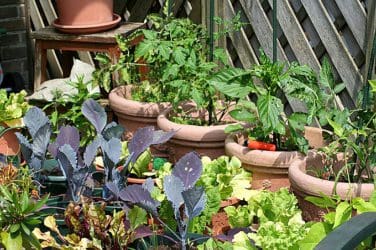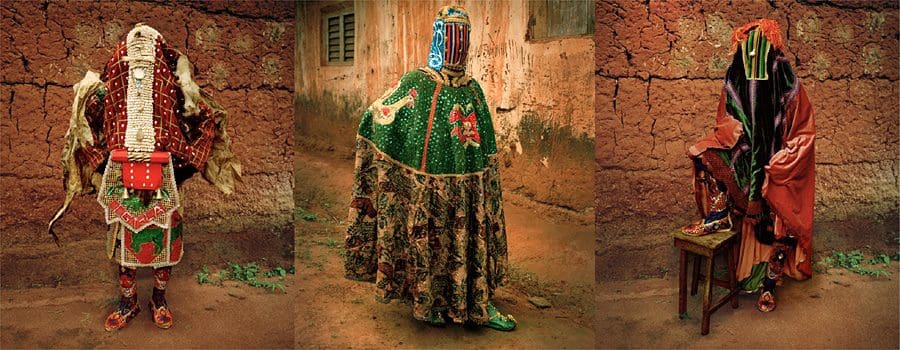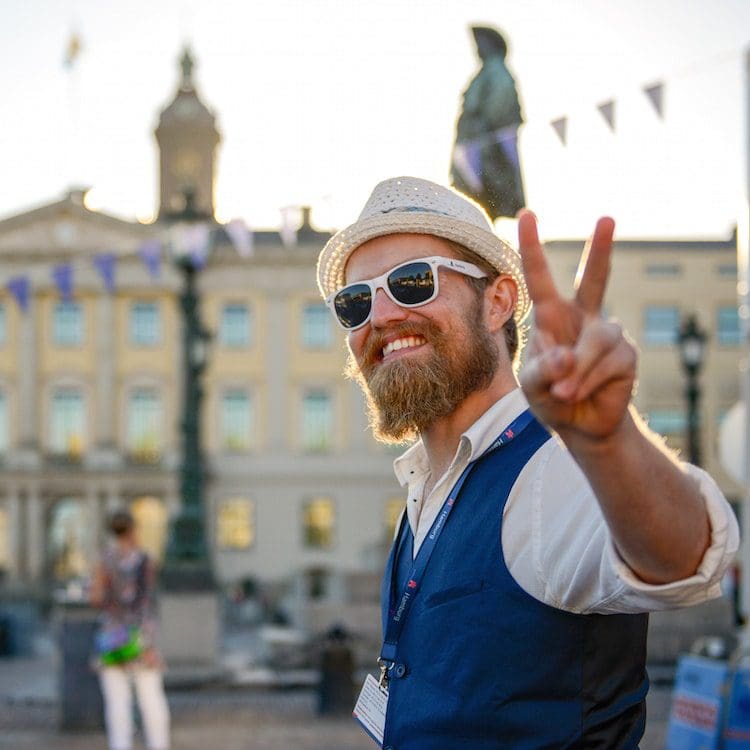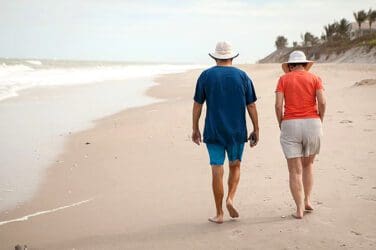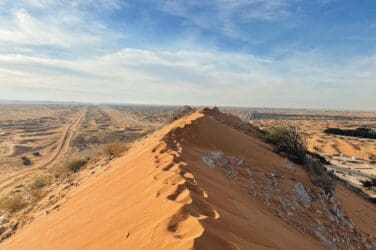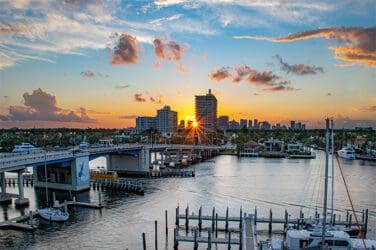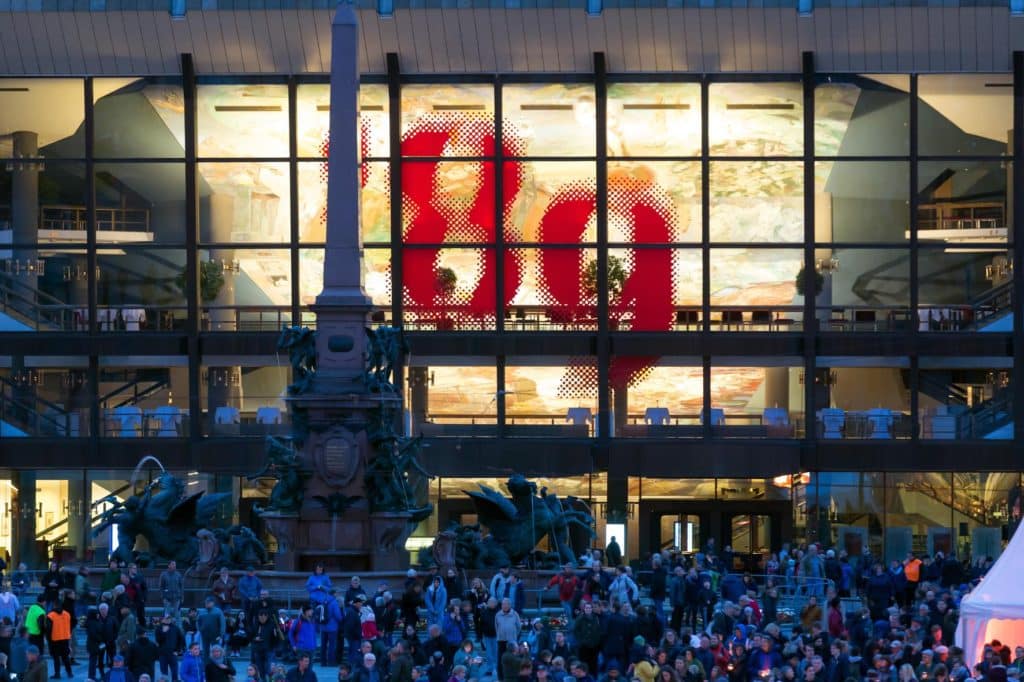
‘Of course I had dreams of a free life, ever since I was a child. But until 9th October 1989, I hadn’t believed it possible’
These are the words of David Timm. In October 1989, he was a 20-year-old citizen of Leipzig, living beneath the Soviet Union’s puppet state, the GDR.
On the 9th October, he would join a protest with thousands of others. But unlike every previous protest, this one would fatally undermine a regime that until then had seemed all-powerful.
A month later, and it would be swept away with the fall of the Berlin Wall. And Leipzig would be crowned ‘The Hero City’, celebrated for its central role in casting off the Russian regime and ushering in German reunification.
So what happened?
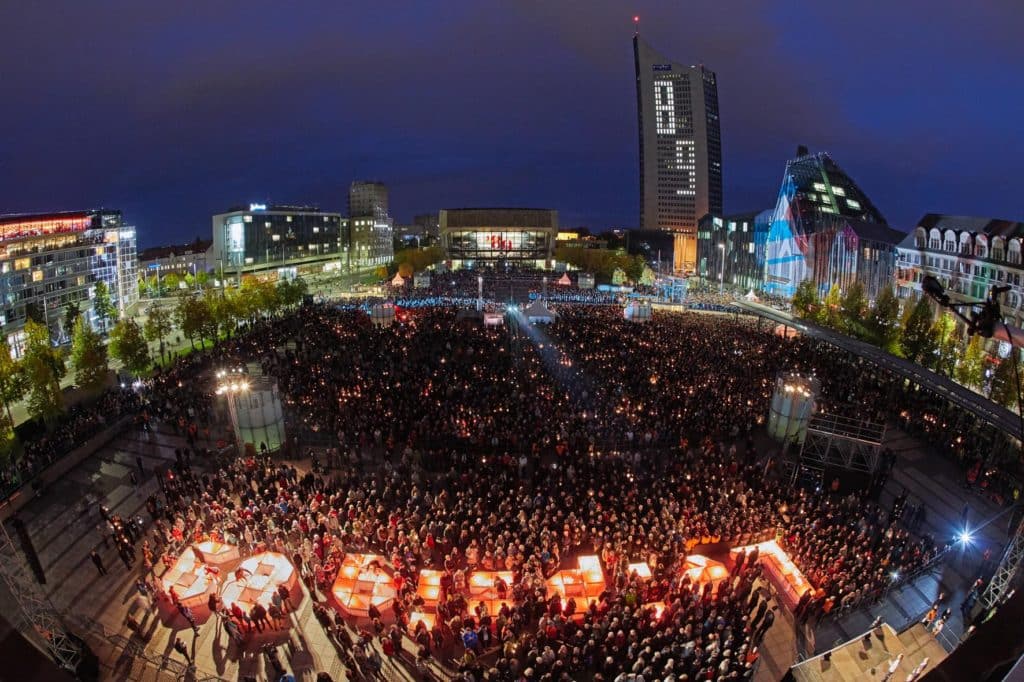
LTM, Lichtfest 2019, 09.10.2019
Words: Chris Zacharia
Today, Leipzig is a stylish, confident city with a growing reputation as one of Europe’s coolest destinations. Germany’s fastest-growing city has transformed its Soviet-era industrial architecture into creative common spaces that have attracted a growing artistic community.
But back in the late eighties, Leipzig was a city seething with strife. Decades of economic stagnation and political repression had made citizens restless for change.
By 1989, massive protest marches were happening every Monday night in Leipzig. They followed the weekly peace demonstrations held at St. Nicholas, a major church near Karl Marx Platz (now Augustusplatz).
Yet despite the growing unrest, few thought that real change was close.
‘In summer 1989, I would never have thought that such a quick ending of the GDR would be possible’ says Kathrin Mahler Walther, a civil rights activist, echoing the words of David Timm.
They found strength in an event unfolding 5,000 miles away. In May 1989, the Tiananmen Square demonstrations in China rocked the world, showing how even unarmed students could stand up to the might of a militarised police state.
‘After Tiananmen Square, when the Communists crushed the peaceful protests, the GDR leadership supported the ‘Chinese solution’, announcing that the GDR would behave the same way’ Walther explains. ‘In the GDR, resistance began to rise and people became more courageous.’
In July 1989, a spontaneous protest led to 100,000 people marching through Leipzig, in support of their Chinese counterparts.
‘We carried the poster with the Chinese word for “democracy” as a sign of solidarity with the courageous protesters from Tiananmen Square – and as a clear demand to the leadership of the GDR’ says Walther.
David Timm recalls feeling that, after Tiananmen Square, the GDR would never reform of its own accord.
‘The social changes that we witnessed since Mikhail Gorbachev’s inauguration in the USSR raised the hope of a more human socialism’ he says. ‘[But] the GDR declared solidarity with the handling of the Tiananmen massacre. After that, no one really believed in a change of mind of the GDR leadership’
In her book 1989: The Struggle to Create a Post-Cold War Europe, historian Mary Elise Sarotte talks about the ‘huge significance’ of Leipzig’s 9th October protests.
Monday 9th October was significant, Sarotte explains, because it was the first Monday of protest after the enforced jollity of the GDR’s 40th birthday celebrations. The East German leadership, led by the hardline Erich Honecker, expected bloodshed.
‘In preparation for that night, Stasi chief Erich Mielke ordered every authorized Stasi agent to start carrying a weapon at all times. Leipzig authorities wielded a force of 8,000’ writes Sarotte. Furthermore, ‘…Leipzig doctors specialising in the treatment of gunshot wounds…had been ordered to report for duty. Hospitals were told to have surge capacity beds and blood reserves available. Foreign journalists…were banned from Leipzig altogether’
‘The fear was a big issue on that day’, remembers Kathrin Mahler Walther, who calls 9th October 1989 ‘my clearest personal memory’. ‘The factories warned their workers not to go outside and the whole city was full of army and police’
‘Everyone was very afraid. But 100,000 people overcame their fear and bravely demonstrated against the system’, she explains.
Yet although foreign journalists were banned, a camera was smuggled into the city. In her story of Leipzig’s role in the fall of the Berlin Wall, Sarotte describes how the camera found its way to the hands of two filmmakers, Aram Radomski and Siegbert Schefke.
‘Filling the void left by the absence of Western journalists, they climbed a church tower and illicitly used Jahn’s camera to film the massive crowds. Their video from the night of October 9 in Leipzig appeared on Western airwaves the next day’ says Sarotte.
‘The next evening, the pictures of the demonstration were sent around the world’ says Walther. ‘This meant the end of the GDR and the beginning of dialogue’.
From the night of 9th October, political protests electrified Leipzig.
‘People could hardly believe how successful the protest had been’ explains Walther. ‘Everywhere people talked about what needed to change in the future and what was done wrong in the past. People were euphoric’
Timm describes how the Karl-Marx-Platz was ‘crowded with chanting people, the excited atmosphere and the ringing bells of the Krochhochhaus. Even today, the bells remind me of…1989’
For a historian like Sarotte, 9th October was a turning point because it proved that violent repression, a la Tiananmen, wasn’t going to happen in Eastern Europe.
‘The significance of Leipzig in October was that it negated the Tiananmen model in the European context’ she writes. The bravery of ordinary Leipzigers like David Timm, Kathrin Mahler Walther, Aram Radomski and Siegbert Schefke exposed the GDR leadership’s weakness and spread confidence throughout the Soviet regime.
After Leipzig’s October, Sarotte says that nonviolence became ‘the order of the day in Europe. The importance of this development cannot be overstated’
Exactly a month later, the Berlin Wall was torn down. So while Berlin’s 9th November 1989 has gone down in history, it couldn’t have happened without Leipzig’s 9th October. The sense of relief, excitement, and possibility was overwhelming.
But the victory against the Soviet regime wasn’t the end of the struggle. ‘After the reunification in October 1990, many people lost their jobs’ Walther recalls. ‘By 1993, two-thirds of people who had been in employment no longer worked in their original profession. It was a huge change for the people’
Walther agrees that Leipzig has developed very well since then. ‘The city center is beautifully restored and the renaturation of the open cast mines has led to much nature around Leipzig’
Today, commemorates the courage of its citizens by hosting an annual Festival of Lights each 9 October and the reading of a peace prayer in St. Nicholas Church, the epicentre of the protests.
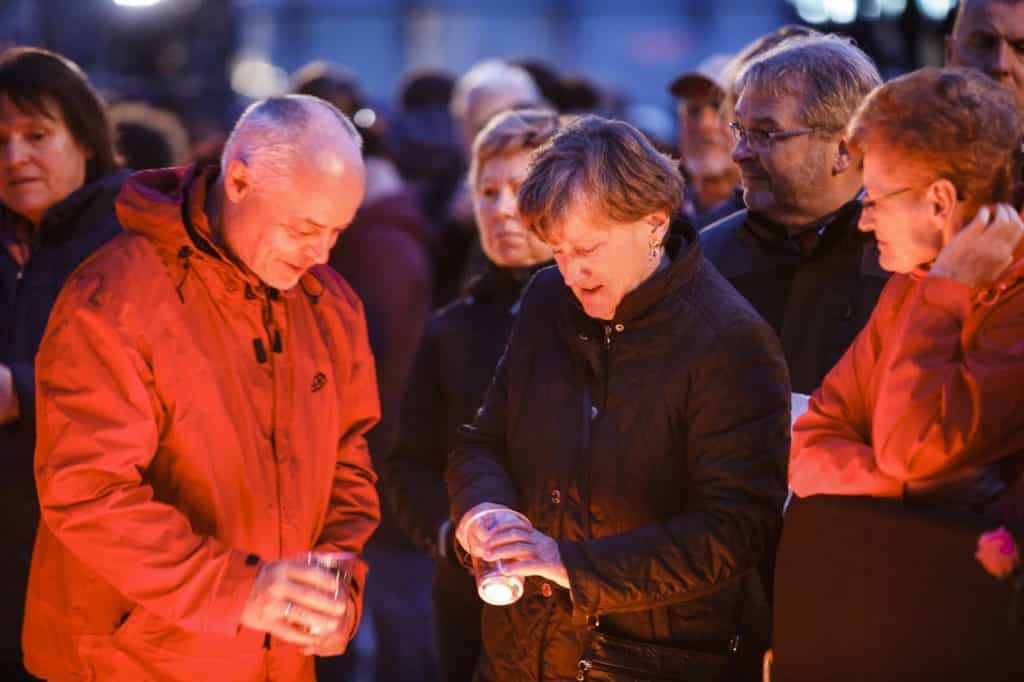
Visitors to the city can join in the celebrations as well as take guided walking tours following in the footsteps of the Peaceful Revolution. Tours take in the Nicholas Column, a monument that stands outside St. Nicholas church, commemorating the gatherings that overflowed from inside. A visit to the Forum of Contemporary History and the Stasi Bunker Museum offer insights into what life was like for the people of Leipzig prior to the seismic changes of 1989.
Now, David Timm is musical director of the Leipzig University. Although much has changed in his life since the nights of 1989, the memories are still vivid. ‘Even today, the bells of the Krochhochhaus remind me of November 1989’.
For Timm and the rest of his generation, these memories make Leipzig a cherished place. ‘I don’t want to live in any other city’
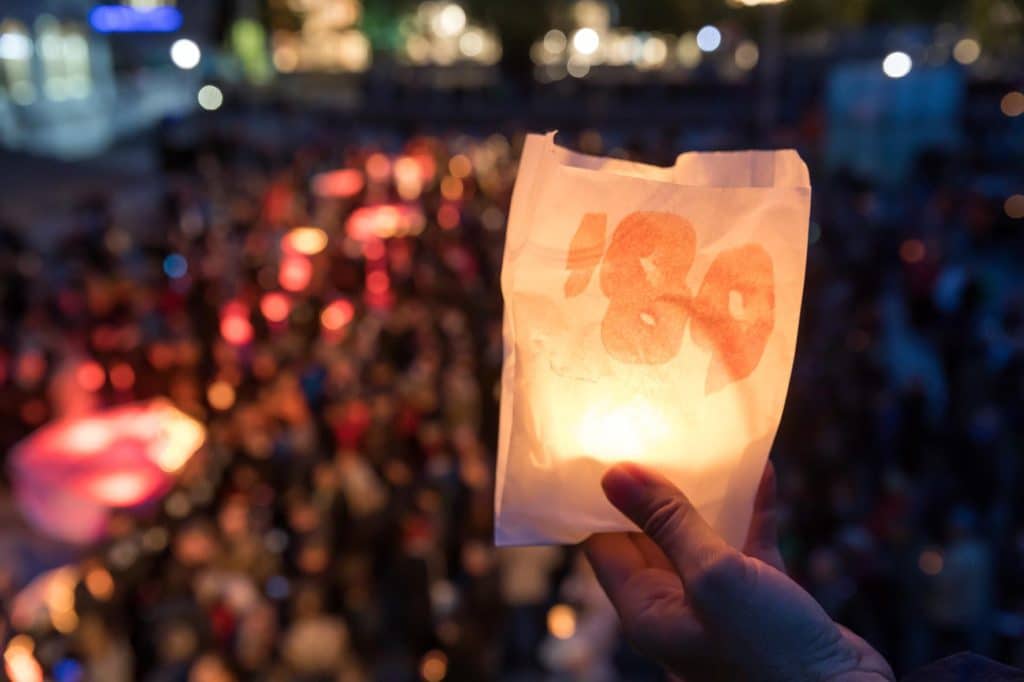
• Flights from London to Berlin start from £82 return with EasyJet
• Leipzig is a 1hr15 direct train journey from Berlin Hbf to Leipzig Hbf (Tickets are approximately £20 return via trainline.com)
• Visitors can choose to stay at Motel One Leipzig-Post from just EUR 69 per night. The design hotel is housed in the former GDR-era Post Office building in Augustusplatz and takes design inspiration from the building’s previous use.




